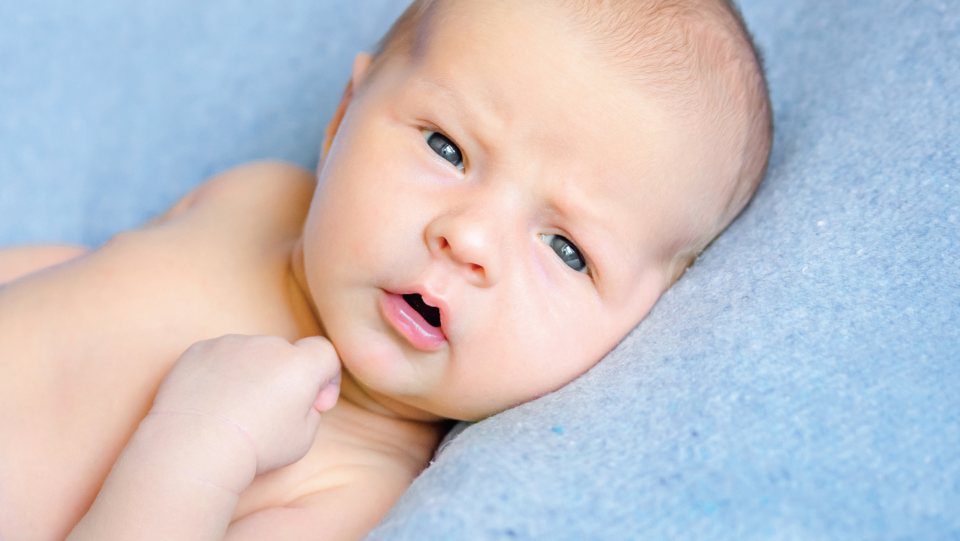The first time he catches eyesight of you is a big milestone. Your baby went from sleepy eyes 24/7 to alert, wide eyes watching you move from one end of the room to the other. If you’ve wondered what he is actually seeing, it’s quite amazing, and his vision is quickly developing each and every day.
Curled up in the womb, his eye development forms the structures needed for vision: eyes, nerves, the light-sensing cells and the neural pathways in the brain.
“As the womb is so dark, it isn’t until the baby is born and finally exposed to light that the brain can start changing to accommodate this new way of exploring the world,” says Evan Yeung, M.D. at TriHealth Group Health-Mason. “After birth, neural pathways continue to develop, as does the eye itself, resulting in improved vision as the baby gets older.”
At birth, eyesight is pretty bad (20/200 – 20/400), Yeung says. However, babies can distinguish light and dark as well as some patterns.
“The best area of focus for newborns is about 8 – 12 inches in front of their eyes, which is also about the distance between Mom’s face and Baby’s face when Baby is nursing,” he says.
By 1 – 2 months old, Baby is able to track objects; by 3 – 4 months old, his hand-eye coordination begins to develop as he may begin reaching for interesting things in his environment (toys, blankets, and mama’s hair!); and by 5 months old, his depth perception and color vision have developed. Interestingly enough, most kids won’t reach their adult level of vision (20/20) until around 3 – 5 years old.
In those early months, if you notice his eyes going cross-eyed at times, don’t worry. This is actually quite common.
“In the newborn period, eyes can ‘wander’ for a little bit as baby’s eyesight continues to develop,” Yeung says. “However, usually by about 3 – 4 months of age, Baby’s eyes should track together.”
If you do notice one eye going in a different direction usually after 4 – 6 months or at any age; or he is having trouble seeing out of one of his eyes, a problem called amblyopia can develop and he will need to be evaluated by an ophthalmologist, says Yeung.
“One of the eyes ‘takes over’ the job of vision, and the other eye becomes progressively weaker. If this is not corrected, the weaker eye can develop permanent visual impairment once the critical window of brain development closes,” he explains.
Help Him See
Simply playing with your curious baby can help with his eye development. Having daily interactions with him is one of the most important things you can do, even while feeding.
“Alternating left and right sides when feeding may help ‘exercise’ both sides of vision,” Yeung says. “Patterns with black/white, and bright primary colors with large shapes will also help to stimulate Baby’s vision.”
Keep items such as moving mobiles about 8-12 inches from him so he has something to look at, but it is also out of his reach. Yeung suggests avoiding using any tech devices for your Baby’s entertainment as it can take away from parent and baby “bonding time” and can set up bad habits in the future.





